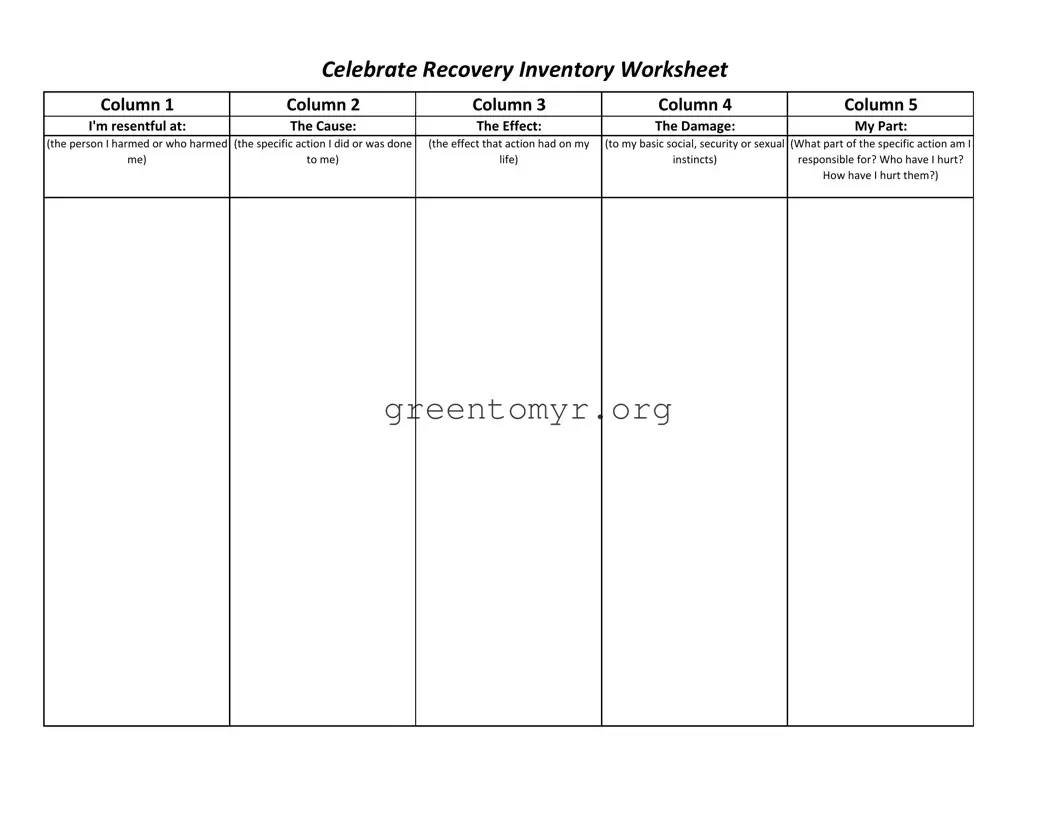When completing the Celebrate Recovery form, individuals often make several common mistakes that can hinder their progress in the program. One frequent error is the lack of specificity when identifying what they are resentful about in Column 1. Residents need to clearly express their feelings; vague statements less effectively capture the emotions surrounding their experiences.
Another mistake occurs in Column 2, where people fail to articulate the cause of their resentments. It’s essential to reflect deeply and provide specific details to ensure a clear understanding of the root of these feelings. Without identifying the exact cause, the process may feel incomplete.
Filling out the effect in Column 3 can also trip up participants. Many individuals overlook the importance of not only stating the effect but also explaining how these feelings have impacted their lives. A failure to consider this effect diminishes the effectiveness of the entire exercise.
Moving on to Column 4, some individuals may not fully recognize the damage done, which can limit their insight into their behaviors. It’s important to note how the resentments and actions have affected their social, emotional, or personal development.
In Column 5, where reflection on personal responsibility is necessary, many people tend to shy away from acknowledging their part in the situation. This acknowledgment is critical for personal growth, and avoiding it may hinder the healing process.
Moreover, a common mistake involves rushing through the form without taking the time to reflect adequately. This haste can lead to a lack of depth in responses, which diminishes the benefits of the Celebrate Recovery program.
Some individuals may also neglect to review their answers before submission. This oversight can result in missing essential details or failing to clarify thoughts that could aid in their recovery journey.
Additionally, not seeking help when stuck is another mistake. There’s no shame in asking for assistance from a mentor or facilitator. They can provide valuable insights that can help clarify thoughts and enhance the completion of the form.
Lastly, failure to maintain a focus on self-forgiveness and accountability while filling out the form is a significant oversight. Both elements are crucial for healing and require intentional thought during the reflection process to cultivate a sense of peace.
